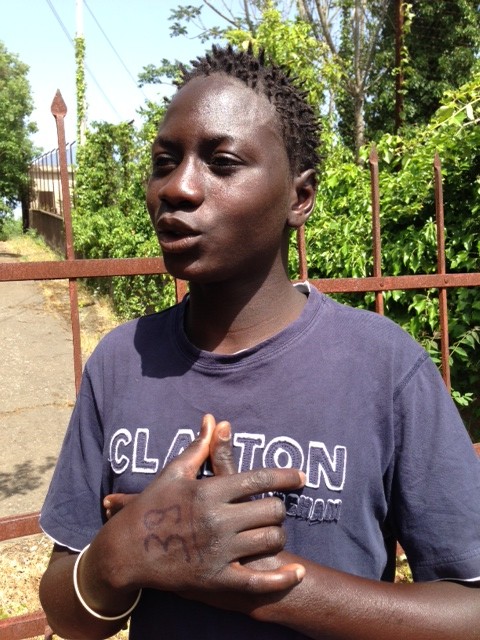
Note for Blog-Readers – I have spent a lot of time in Sicily this spring covering the migrant story and I have not had enough time for posts. I’ve now decided to do several posts as a diary for myself, a sort of Reporter’s Notebook– a write-up of my notes with photos and freeze frames of video shots so it will stimulate my memory in the future. Feel free to either read it if it interests you or skip this Sicily series.
Baboucar Lowe is a tall, thin, dark-skinned Gambian boy. He came loping across the parking lot of the La Madonnina center for minors in Nicolosi, Sicily and told me in English that he was willing to be interviewed, that he would tell us about his journey. He was sincere and seemed to want to share his story without asking anything from me. No help, no money. Nothing.
He walked out of the gate and stood near a fence and matter-of-factly began his harrowing tale. He was wearing a new blue t-shirt, matching blue sneakers and Bermuda shorts. If I were seeing him in a different context, I might have confused him for any high school kid. The clothes were given to him in the Italian port of Catania a day earlier. The only giveaway was the 39 written in indelible magic marker on his hand. He was numbered migrant 39 when he came of the Merchant ship Zeran a day earlier. His short hair seemed curled into some funky little corkscrews and when I ask him about it, he pointed to his new friend, also from Gambia, also from the center for minors, with the same hairdo. Baboucar has dark brown eyes, long lashes and when he spoke he demonstrated a sensitivity and maturity that I have seen in few boys his age.
We began our interview and as I heard him earnestly recount what he had been through my mother instincts kicked in and I wanted to grab him and hug him and tell him, “it is going to be alright.” I did not of course. I kept my professional distance, just my arm reaching toward him holding the microphone. I repressed my emotions and tried to forget that this boy was younger than my own son, the same age as my daughter, and had just survived a horrific crossing of the Mediterranean. I also pushed aside my own concerns that maybe it would not be alright for Baboucar. Where will he go? What will he do? Who will help him?
The day before I met Baboucar, I took a flight from Rome to Catania, Sicily with my colleague, video-journalist Andrea Rosa. The number of migrants being rescued in the Mediterranean and brought to Italy was soaring again and AP Television needed more staffers in Sicily. (Note: figures provided by the UN High Commission for Refugees say from January to mid-May 39,000 migrants have arrived on the shores of Italy, and an estimated 1820 have died or are missing).
As Andrea and I waited at the baggage claim for our suitcases, tripod and camera equipment, we got a call that a merchant ship had arrived in the port of Catania carrying hundreds of migrants and apparently some dead bodies. We grabbed our bags, rented a car and I drove as fast as I could towards the port swerving between giant trucks trying to find the right dock.
When we found the pier, we could see the large merchant ship Zeran, hundreds of migrants standing around on the dock, while Red Cross workers and police buzzed around. Andrea jumped out of the car and immediately set up our LIVEU (a small machine that fits into a backpack size carrier that is attached by cable to the camera and allows one to broadcast images live). I began talking to everyone trying to get information. I saw Giovanna De Benedetto from Save the Children who explained that there had been some sort of incident and lots of people had died, but apparently they had only recovered 5 bodies.
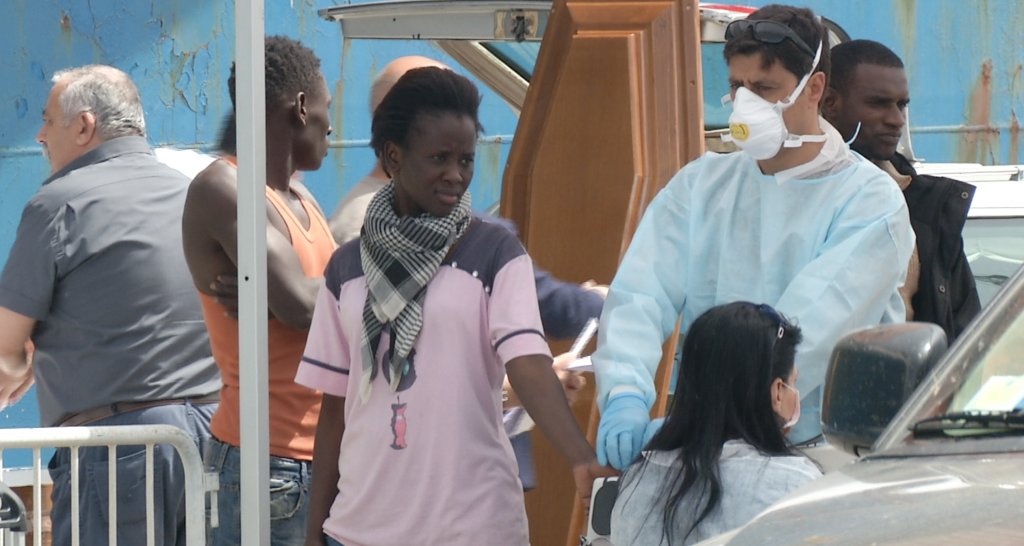
I tried to get close enough to some of the migrants to hear their stories. I managed to speak to a young woman from Senegal named Astou Fall Dia, a 24 year-old migrant from Senegal who was the first one to explain to me what happened. She was in a rubber dinghy with over 100 people, the dinghy “exploded” she said and began to deflate as they were nearing the merchant ship. Sailors on the merchant ship threw down ropes and lifesavers but the people in the dinghy panicked and started jumping on top of each other to try to get the ropes. Many people fell in the water. She didn’t know how many had drowned.
Astou calmly said she was among those who fell in the water but she knows how to swim and she stayed near the dinghy and was eventually saved. Astou said she is hoping to go to Germany and find a job.
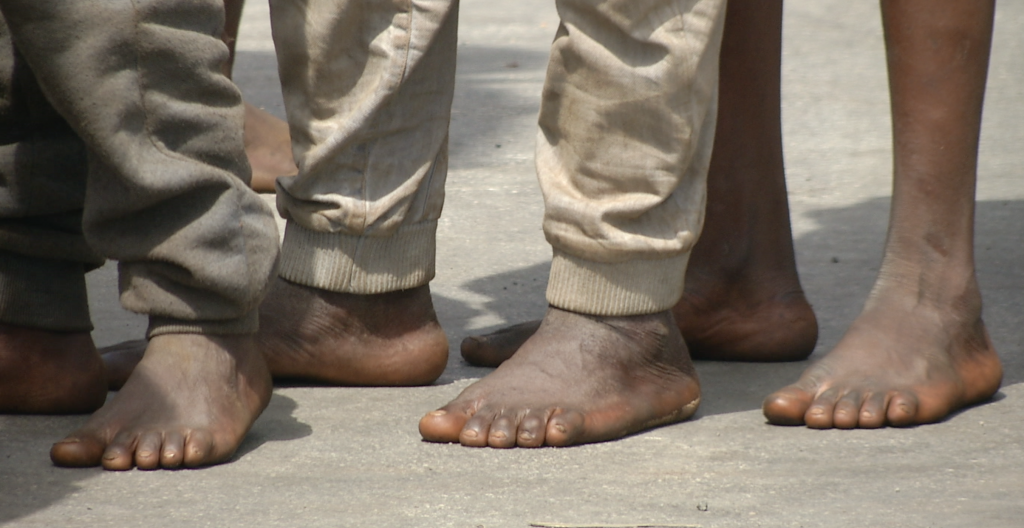
There were men, women and children standing around waiting. Aid workers gave them brand new sneakers (more on that in another post) and they stood around in spanking new counterfeit Adidas, Merrills and Hogans. Eventually the sailors from the merchant ship began carrying off the bodies. Four sailors in sanitary suits struggled, heaving the bodies in green bags down the long gangplank to the waiting coffins in the port. They clearly were having a difficult time with the weight. I think the bodies had become waterlogged and were especially heavy.
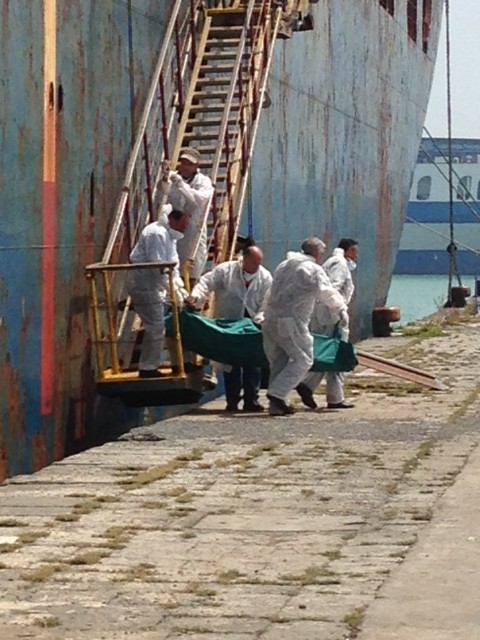
Once the bodies were off the ship, the migrants boarded buses to go to various centers around Sicily. The minors go to separate centers, the rest to first acceptance centers. We did some on camera interviews and then Andrea walked a short distance away, put the camera on the tripod and got a wide shot – the huge mercantile ship Zeran, the migrants standing around, the police, the aid workers. I continued to wander around the edges, trying to chat with migrants. A little girl who survived proudly reached through a barrier and showed me the number she had written on her hand, 13.
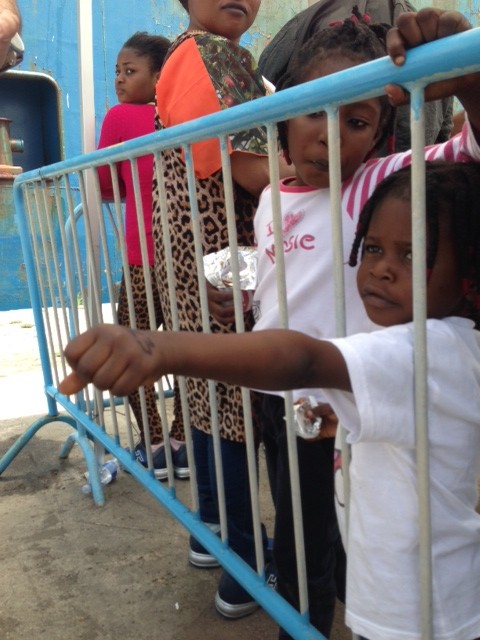
Many spoke some French or English. (Note: this boat had all West Africans, the following night a boat was brought into port with migrants from Somalia, Sudan and Eritrea and I had much more difficulty communicating with them. All the women had brightly colored scarves on their heads and none of them seemed to understand me or want to talk. One boy from Sudan spoke English, but he was the only one I was able to chat with).
While I was talking to migrants and aid workers, Andrea was approached by three Polish crewmembers from the Zeran. They had taken video and photos of the rescue and wanted to know if we were interested in seeing it. Andrea called me over. One sailor pulled out his phone and showed us the images. Andrea and I were struck by the drama and horror seeing the migrants in the dinghy panicking, climbing over each other, sheer desperation in their faces. One end of the dinghy was deflating and the whole thing was filling up slowly with water.
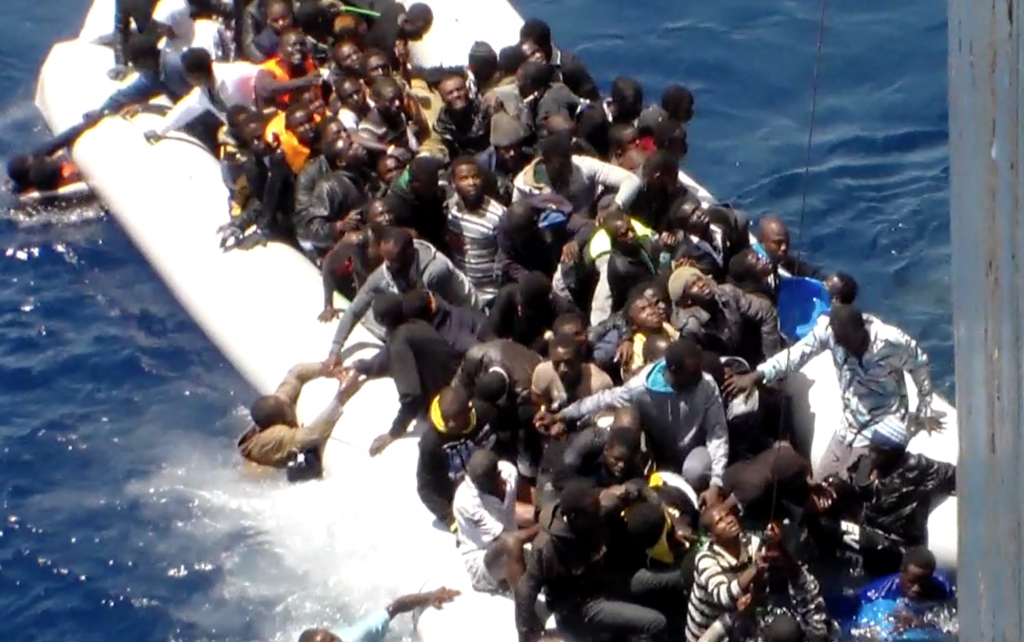
The sailors were throwing down ropes and lifesavers and yelling “easy” – but no one seemed to understand or care. Migrants were falling out of the dinghy and trying to climb back in, others were trying to swim towards the sheer side of the merchant ship, others were emptying plastic gas canisters to use to float. We immediately began negotiating with the sailors to have access to their material.
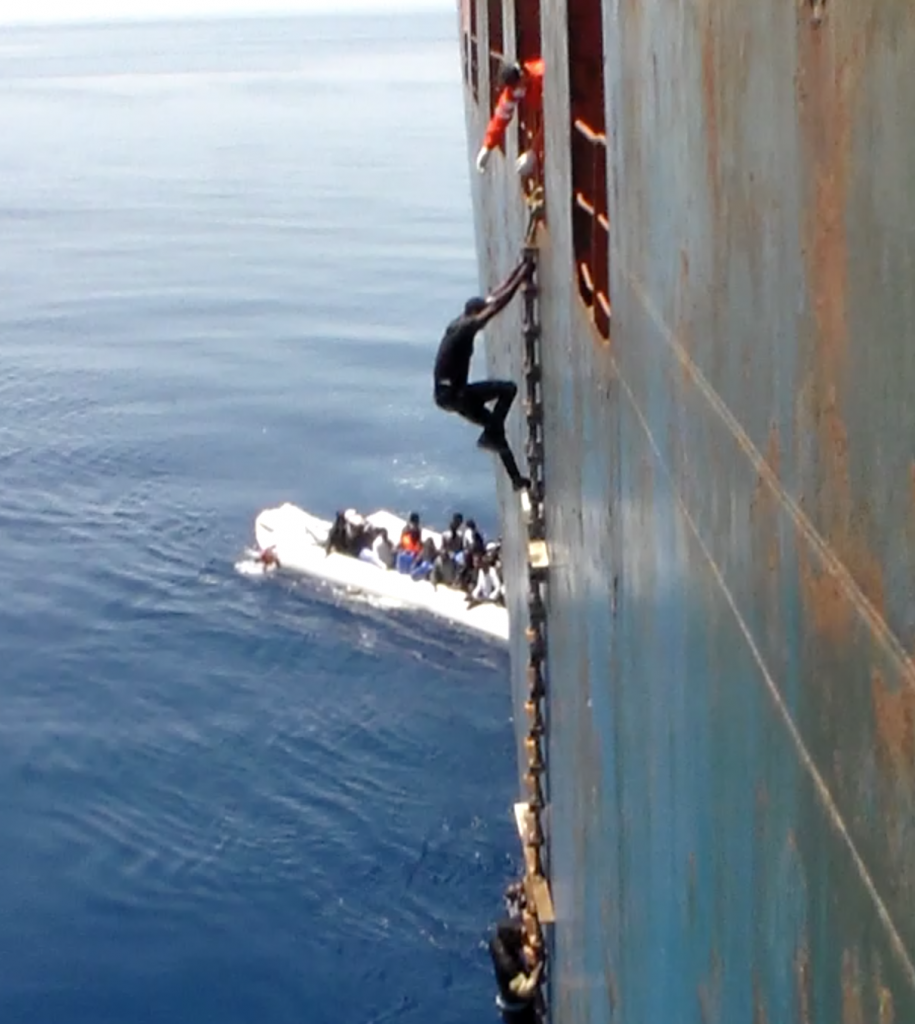
AP Television eventually broadcast that video around the world and it was picked up by lots of networks – BBC, SKY, RAI, the New York Times website. We are often provided with Italian Coast Guard or Navy video of rescues at sea. However, by now the Coast Guard and Navy have the rescue technique down. They keep the larger ships at a distance from the migrant boats and approach the dinghies or fishing boats with small craft. They yell and gesture at everyone to sit down and then throw large garbage bags full of orange life vests to them. When every migrant is wearing a life vest they pull up beside the dinghy and ask for just the women and children and transfer the migrants in small groups to the larger ship.
The crews of the merchant ships do not have the same experience and training and there is more chance for disaster. A merchant ship named the King Jacob was trying to rescue the migrants aboard the fishing boat that sunk on April 18th with an estimated 800 migrants below deck.
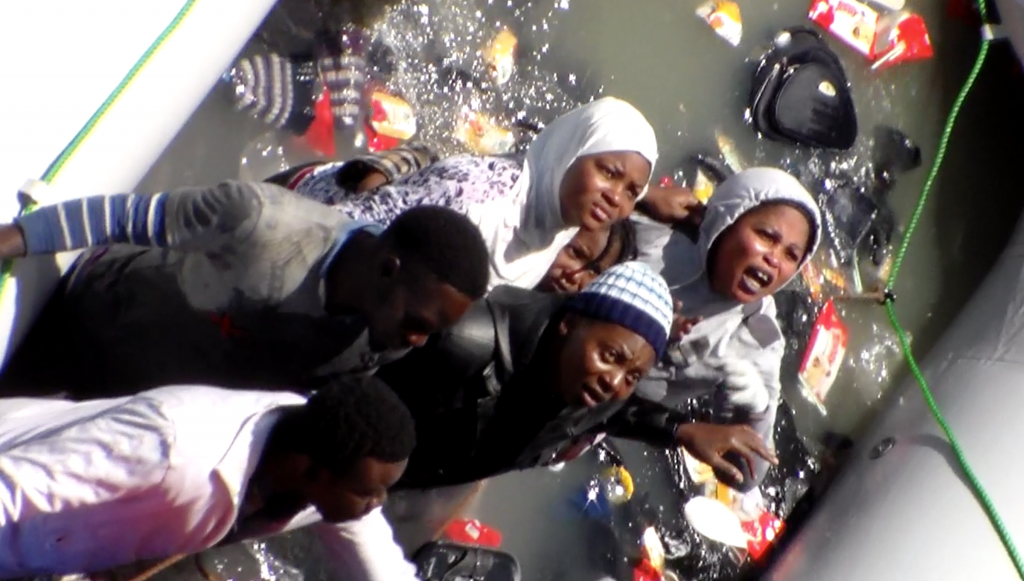
A day after covering the arrival of the Zeran in the port of Catania, cameraman Andrea Rosa and I went out to “La Madonnina” center for minors with Frank Jordans from AP wire and Antonio Calanni for AP photo. We found Baboucar and he told us about his journey.
Baboucar is from Gambia and is an only child. His father is not alive. He was working painting cars in Banjul, Gambia but then travelled to Libya in January of 2014 to try to make a better living. He said, “Libya was very hard. Sometimes you will work and go out, they take your money.” He decided to take the risk of leaving Libya and attempt the crossing to Italy. He said he paid 700 dinars (roughly 500 dollars) for his spot on the packed rubber dinghy. Baboucar said there were 137 people on board. Only 91 arrived in port.
Baboucar calmly described the appalling scenes of panic that we saw on the video and said he remained seated because he doesn’t know how to swim. This is what he said,
“The boat was spoiled. ..It was going up and down. It was crazy…They tried to get up to the big boat but they could not do it, some people they could not swim….Many people jumped but they could not swim…It was very hard…Some people climbed up on them, that’s why some people died…It was very hard. I saw people were dying…Some people rose but not me. I wait my turn…I don’t know how to swim… I thought I was going to die.”
We knew what he was talking about because we had seen the sailor’s video of the dead bodies floating in the empty dinghy.
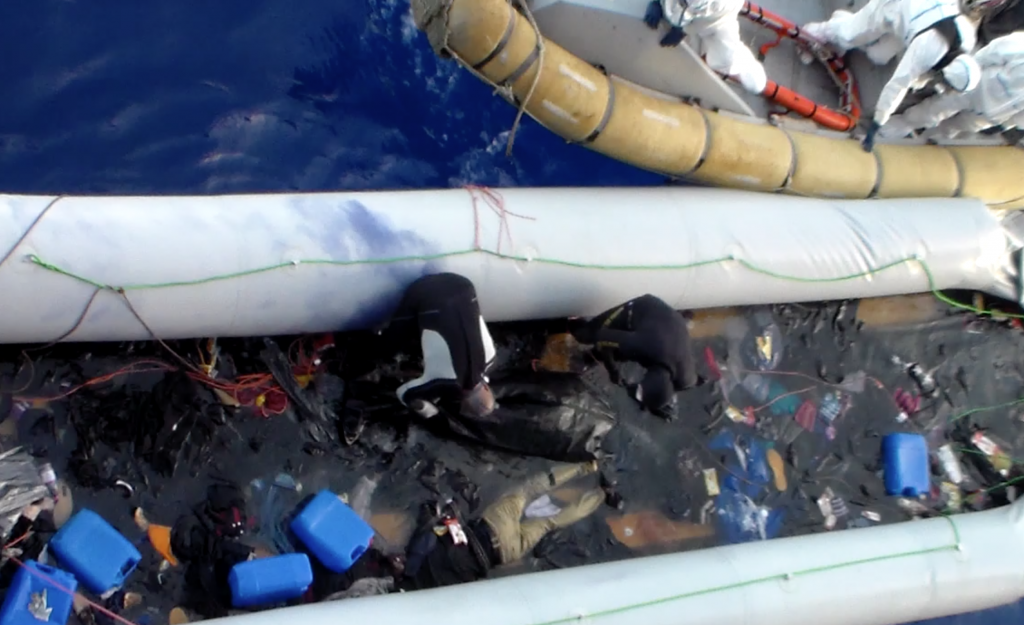
Baboucar said that earlier he had been given the opportunity to phone his mother in Gambia and she had cried when she heard that he was safe in Italy. When I asked about his future he shrugged and said simply, “I want to paint. I want to work, Inshallah.”
Note: I used freeze frames in the post of AP video and the video we acquired from the sailors – the video is property of the AP Archive aparchive.com
Coming soon in this Sicily series: Migrant Workers in Sicily, Counterfeit shoes, Traffickers and Terrorists
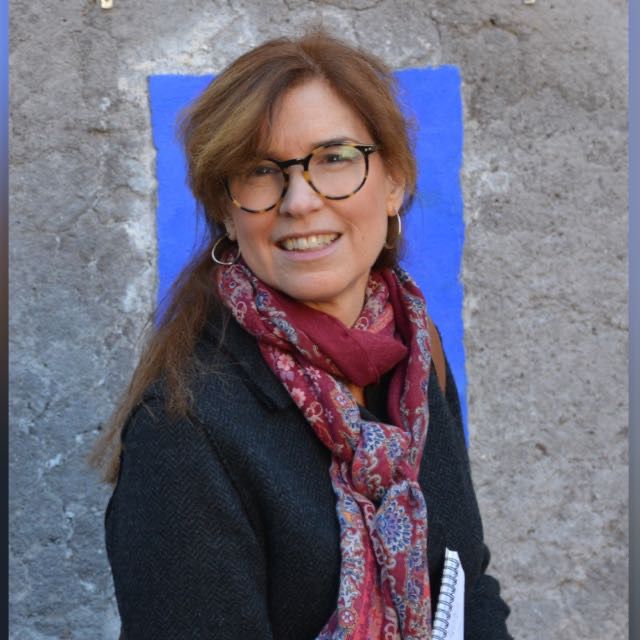
Trisha I don’t know how you’re able to do your job sometimes. This must be some of the most harrowing work you’ve ever had to do. The little girl, the bare feet, the faces on those people pleading from their boat, that young boy….I can hardly absorb what I’m seeing.
Elsewhere in the world, my own 19 year old son is in Spain, walking The Way of St. James from the French border to Santiago de Compostela. He is privileged enough to have the time, money and health to do this. My other son is 15, and doing his homework, will go to school tomorrow in a safe and secure country where his human rights and dignity are respected.
What is going to happen to Baboucar, to that little girl, to those mothers? I am just thankful that Italy continues to open its heart, regardless of the people smugglers and their vile human trafficking, and house and protect these people. Is there a way I can help them, Trisha? Is there a humanitarian agency in Italy that is taking donations? I would love to do what I can.
I agree with you Kathy — when I see these children, the mothers — I cannot help comparing them to my own children, and my own experiences. I ask all of these migrants to write their name down for me in my notebook because I don’t want to get it wrong. Many of them have difficulty writing and clearly have had little education. And I am worried because my daughter spends too much time on Facetime instead of studying and doesn’t bother practicing the piano!?! It gives you a new perspective on things. There are a lot of groups working with the migrants if you want to make a donation, Save the Children, UNHCR, Medecins Sans Frontieres, Terres Des Hommes to name a few. On a similar topic, I have been struck my images of the Rohingya migrants floating around the South China sea. It is so horrible. Is there much talk about that migrant exodus over there? It is all so discouraging.
Thanks again, Trisha for providing your very personal coverage. What difficulties these people face. And to think that some of them do not know how to swim. I was shocked by the shot of the merchant vessel. It must be terrifying to climb up the side of that huge ship.
I hope that other European countries and perhaps the U.N. are joining in the rescue and aid effort. Are Italians’ views of these migrants softening or is opposition to helping them growing? I am looking forward to reading more on this subject.
Thanks for your comment Adri — more European countries are providing ships — Portugual, Britian, Iceland to name a few. There is also now an independent boat named The Phoenix — run by a group called MOAS – Migrant Offshore Aid Station. It was started by an American Entrepreneur and Philanthropist of Italian origin who together with his wife decided they wanted to do something to help. They run it together with Medecins Sans Frontiere. They seem like an interesting couple, their names are Christopher and Regina Catrambone.
As far as accepting the refugees that is a real sticking point in Europe. The UK does not want any, the Eastern European countries do not want any, France and Spain do not want quotas requiring each country to take a certain number. Germany and Sweden have probably been the most generous about taking in migrants — after Italy.
Thank you for having the courage to go to Sicily, find people who will talk, and bringing their stories to us. Having such vivid accounts and pictures.makes us acutely aware of the price people are paying in the hope of a better life and how fortunate we are to have the life we do.. I look forward to hearing more of your story although I know it will be painful.L/D
Thanks Dad. If it wasn’t for your urging and encouragement, I probably would have put all my notes aside and not bothered with this Sicily series for my blog.
Thank you. I will certainly read your “diary” posts. I have a feeling that they will give me a more personal story than watching the news on TV–which I have to admit I don’t do. I prefer reading. Also your posts are much more affecting and informative than most stories I have read. And I do mean thank you. More people need to know these personal insights.
A presto
Thank you Joan, you are very kind.
. . this endless tragedy, with countless lives destroyed is just the visible tip of the iceberg. The cause? Western,capitalist depredations in Africa and the Middle East. Europe refuses to even consider a sticking plaster (accepting refugees) let alone do something about the causes. Bravo to the organisations and individuals in Italy who do what they can and show a human face to these desperate people.
I agree with you that Europe– despite lots of meeting and announcements– is not evening putting a bandaid on the problem. The recent idea of destroying smuggler’s boats is ridiculous. They are all using the cheap rubber dinghies (I believe made in China) that they must pull out of boxes, blow up with a bike pump on the beach over load with 100+ people — and then the boats promptly self-destroy, deflate before they ever arrive in Italy. No need to destory them – they self-destruct and new ones are easily available. More on this in a later post.
I really like your coverage from Sicily – you have a very personal touch and give a face to the many people we hear about in media. It reminds me of the documentary Mare Chiuso from few years ago, which was interesting in telling migrants’ stories. Good luck with your work and keep us posted!
Thank you so much for your comment and I am glad you like my stories. I only saw pieces of the documentary Mare Chiuso, but I should definitely go look at the entire thing, I have heard it is very good.
I am glad you are doing this writer’s diary on your experiences in Sicily. It is a compelling post…so similar and yet different than the immigrant crossing narrative we have in the U.S. Thank you for sharing.
Thank you Elspeth — It is a very different story than the one on migrant crossings to the US –which I know very little about and would be interested in covering, and also it is different from the dramatic story of the Rohingya migrants in Southeast Asia, which is also something I know little about but would be interested in covering. The common thread is people seeking a better life and terrible suffering as they do so.
All I can say is “There but for the grace of God, go I”. My heart breaks.
I think the same thing regularly. Yesterday I covered a press conference at the UN’s Food and Agriculture Organization on the State of Hunger in the World. Globally, hunger is decreasing but Sub-Saharan African continues to have terrible undernourishment with 124 million hungry people in Eastern Africa alone. When I read those figures I thought that it makes sense that they risk their lives to cross the Mediterranean.
Congrats on a wonderful, educational and really moving post. You really provide such a great intimate and human insight to this issue that sometimes just gets one overwhelmed with so many pictures of so many people in boats…this brings it to such a human, humane level. I wish more reporting was done like this.
Thank you Kay!! I really appreciate your support.
Thanks so much for writing this series, and for going to Sicily to tell this story. The perils of these journeys and the strong belief of so many Africans that this is the best solution for them amaze me. I wonder how the survivors will come to think about all this, in ten or twenty years? Or if they will ever be in a place safe enough for them to develop a horror about such deaths as these. They are like people in a war zone, there is no way out to a safer place for them, and so they accept death, and keep on risking their lives. You could write abook about these personal narratives, and about life that we barely notice, in this world.
Thank you Nancy — I do not know if I will manage to get through the last two parts of the Sicily series — so much to do and so little time to write, which also makes it seem unlikely that I will ever get a book published. Still, I do love telling the stories of these incredible people.